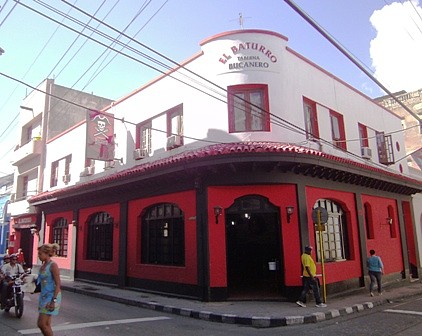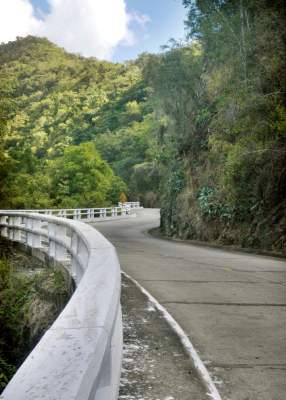Speeding Up Changes in Eastern Cuba
Alberto N Jones

HAVANA TIMES — What has sadly become a ritual in Cuba are the yearly mea culpa of the heads of the nation’s most important institutions for failing to fulfill the meager projections they had set for themselves.
Some spokespeople of these institutions have created a language of their own, trying to convince an increasingly skeptical population, who year after year, have been deprived of the goods and services they were charged to provide.
Food is in short supply, the sugar industry is dwindling, drinking water is scarce and of poor quality, sewage frequently flows untreated above ground, public transportation is a disaster and housing is in critical disrepair.
Numerous barely passable roads and highways are a major cause of accidents, healthcare service has deteriorated with the resurgence of transmissible diseases, tarnishing the nation’s health care image and failing schools are putting the nation’s future at risk.
President Raul Castro has called to stop blaming the embargo for our failures, but it is still a fashionable introduction for every malady, trying to justify the unjustifiable. Triumphalism and secrecy has been denounced but remains entrenched in many hearts and minds.
The first major entity to come out acknowledging its shortcoming was the Ministry of Tourism, shedding tears for failing to reach its meager 2% growth, which would have landed 3,000,000 tourists in Cuba.

The City of Baracoa and Santiago de Cuba were founded by Diego Velazquez in 1511 and 1514 respectively and Saint Augustine, Florida, was founded by Pedro Menendez in 1565. Baracoa and Saint Augustine each have today approximately 60,000 inhabitants, while Santiago de Cuba is close to half a million. All three cities are part of UNESCO World Heritage.
Saint Augustine is 10% de size of Santiago de Cuba and 20% of its historic, cultural, scenic and natural beauty, but it attracts five million tourists a year.
Some people argue that the development of this unique Spanish colonial city of the United States East Coast is due to its strategic location 120 miles away from Orlando and its 50 million annual visitors.
Santiago de Cuba on the other hand, is a mere 2-3 hours flying time from all of its Central America and Caribbean neighbors.
The crux of the matter is that while St. Augustine has developed a wide and intensive promotion of its community around the nation and abroad, the former province of Oriente has never had any promotion or tried to sell itself in the region.
Cuban Radio and TV stations have no programming geared to the region and its tourist fair, business, cultural, religious, coastal trade and professional exchanges, are virtually non-existent in this entire region.
This year, the Ministry of Tourism displayed its most aggressive promotion of Cuba as the Caribbean choice destination in central-eastern Europe, the Middle East, Japan and South America.
An apparent pre-conceived prejudice towards the purchasing power of the Caribbean has led leaders of the tourist and other entities in Cuba, to underestimate and disregard the region.
Ignoring southeastern Cuba’s unique geography, distinct culture, history, traditions and hospitality, have forsaken an enormous unexploited economical potential, by those decrying the lack of tourists arrivals.
Southeastern Cuba has the least developed tourist infrastructure in the nation, with one quasi “5 star hotel”, a partially functioning “4 star Hotel” and others referred to as “3 stars.” The large Hotel Venus and once most prestigious Hotel Imperial are closed and crumbling for over 40 years.

No one believes that a lack of attractions is the culprit for Oriente underdevelopment, having the Rough Riders landing site in Daiquiri and Siboney, San Juan Hills, the Morro Castle and the sunken wreckage of the Spanish fleet, General Antonio Maceo’s home and Square, the Bacardi Museum, Jose Marti Mausoleum, Santa Efigenia cemetery, the Gran Piedra Coffee ruins, the Moncada Garrison, the Basilica of the Virgin of Charity, the site of the Protest of Baragua and Loma del Gato, where General Jose Maceo fell in combat.
The English Speaking Caribbean and Haitian community have Goat Hill in Guantanamo, Caimanera, overlooking the Guantanamo Naval Base, the Alexander Humbolt Biophere natural reserve and Baracoa.
Oriente also includes the sites of the beginning of Cuba’s two Wars of Independence, the city where national anthem was written, the home of the Father of the Cuban Nation, the site where slaves were freed, the Granma landing and the Sierra Maestra. One of Cuba’s best beaches in Guardalavaca, Christopher Columbus landing site in Bariay and Cuba’s largest archeological site in Banes suffice.
All these are more than enough to attract an additional million tourists to Cuba.
Why is it then, that the Ministry of Tourism and other major entities have not engaged their counterparts in the Caribbean and Central America, to promote tourism joint ventures, health care tourism, retirement and eldercare services for people in dire need of a beautiful, safe, cost effective living conditions, capable of generating tens of millions of dollars and thousands of jobs?

There are many repeat visitors to Cuba! Alas! They are mostly “Fly-and-floppers,” who go no further than the Varadero-Havana-Trinidad axis, or the offshore AI resorts. To better publicize the Oriente, not to mention a real build-up of tourist infrastructure, a major infusion of foreign capital is needed. Future development, however, should be strictly regulated, otherwise Cuba will not only destroy its wonderful natural treasures and world heritage sites, but develop a tawdry image as well. (One example of the latter, up here in my neck of the woods, is the difference between Vermont and New Hampshire. Vermont has strict control over its development, and has carefully guarded how it has marketed its image (“Vermont: The Way America Used to Be!”) On the other hand, New Hampshire, with its largely unregulated zoning has a much more tawdry image. Also, in southern N.H. there are hundreds of “dead malls,” ugly strips leading into and out of town, and cheesy bedroom communities for Boston commuters wishing to avoid Massachusetts taxes. (Ironically, since N.H. has no income or sales taxes, the only way local communities can raise taxes for schools is through property taxes–amongst the highest in the nation. It used to be that New Hampshire at least had more good jobs, but as these jobs have been outsources offshore, even these jobs have fled, including engineering jobs (for technology follows manufacturing, of course). I feel a bit conflicted about all this. The 60 or 70 km. of utterly pristine and undeveloped oceanfront east of Guantanamo City, for example, (before the highway turns inland, and up an over the mountains on the La Farola Highway) are utterly enchanting, a great natural treasure, which would be ruined by ocean-front high rises every few miles. Still, good planning and the development of eco resorts would be the way to go IMHO.
Dr. Jones’ continued focus on the challenges which face his homeland in southeastern Cuba seems genuine. It is surprising that he fails to see the greatest obstacle to improving the quality of life in this region and Cuba as a whole. He has also commented on the slow progress of repairs to homes in Santiago de Cuba after the damage done by Hurricane Sandy. In this post, he writes of the failure of MINTUR to promote tourism to the region. The answer is simple: Castro-style socialism. Increasing tourism arrivals to Cuba in general and Santiago de Cuba specifically requires an aggressive and competitive marketing campaign designed to highlight the advantages of travel to Cuba over nearby destinations. When was the last time the words “aggressive” and “competitive” were used in the same sentence as “socialist”? Lacking the public funding to support anything more than a facelift for tourist hotels and other tourist venues, Cuba offers visitors comparatively few real choices. Cuba’s crumbling infrastructure discourages first-time Cuban visitors resulting in the lowest repeat tourism numbers in the region. This leaves Cuba reliant on attracting first-time visitors to reach annual tourism goals. News of human rights abuses in southeastern Cuba are increasingly more common in the major news outlets. Dissidents who have recently been allowed to travel abroad have confirmed these abuses and Cuba’s once unchallenged image as a “safe” destination has suffered as a result. It is not likely that these challenges will be overcome until
there is a change in regime.